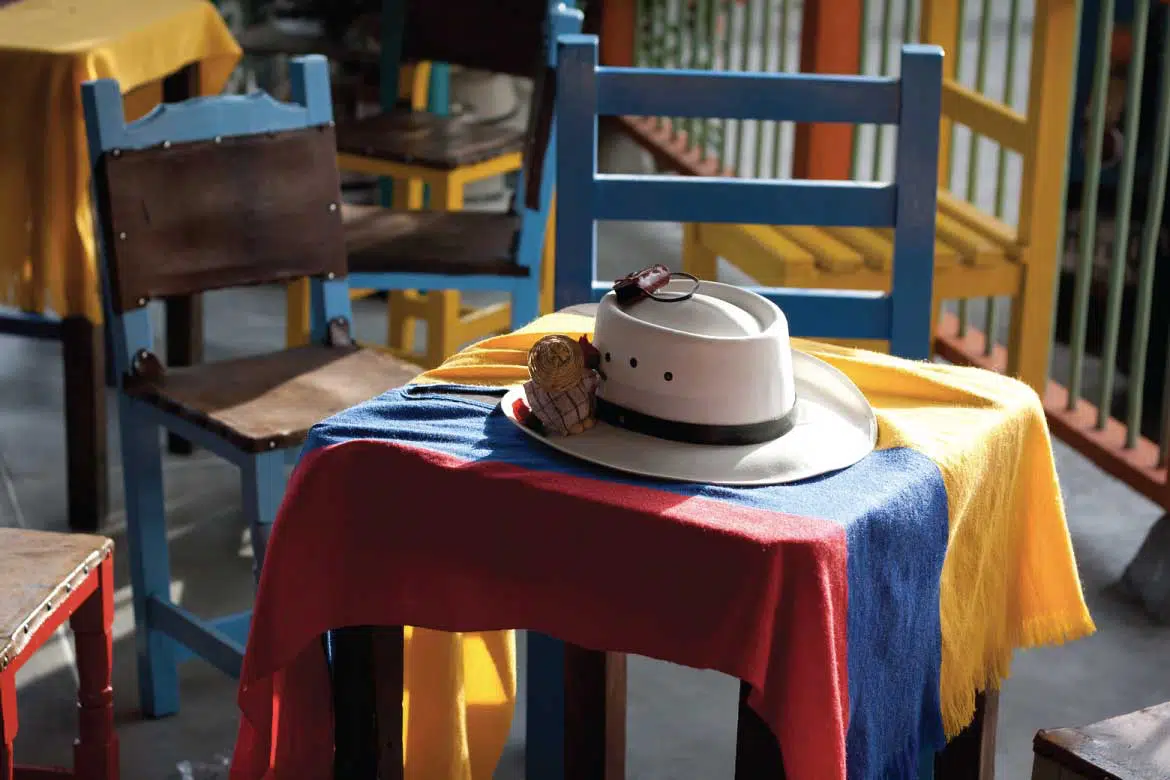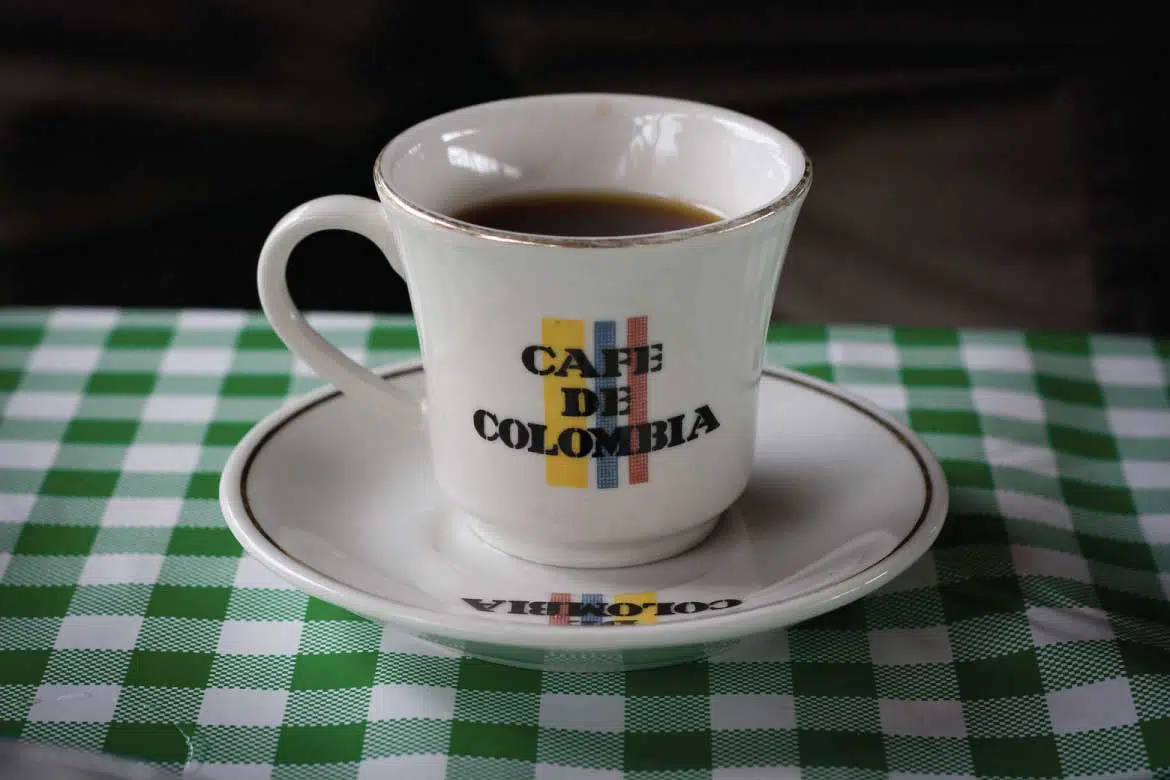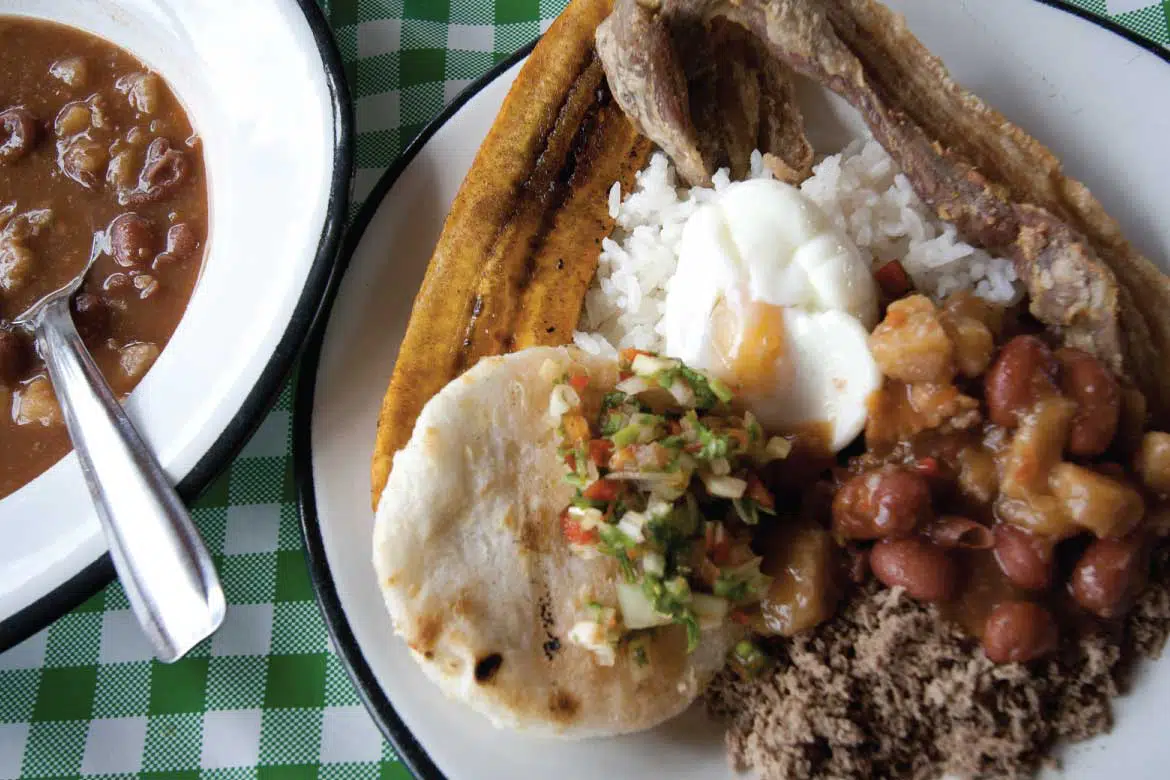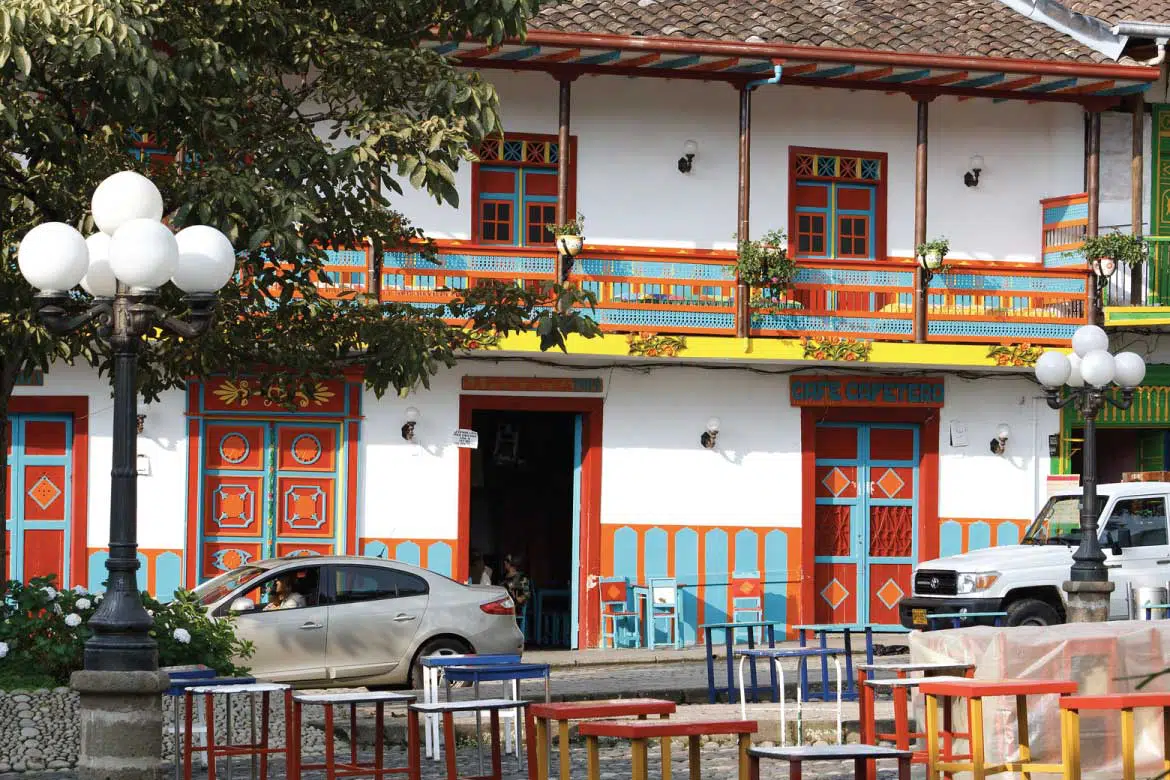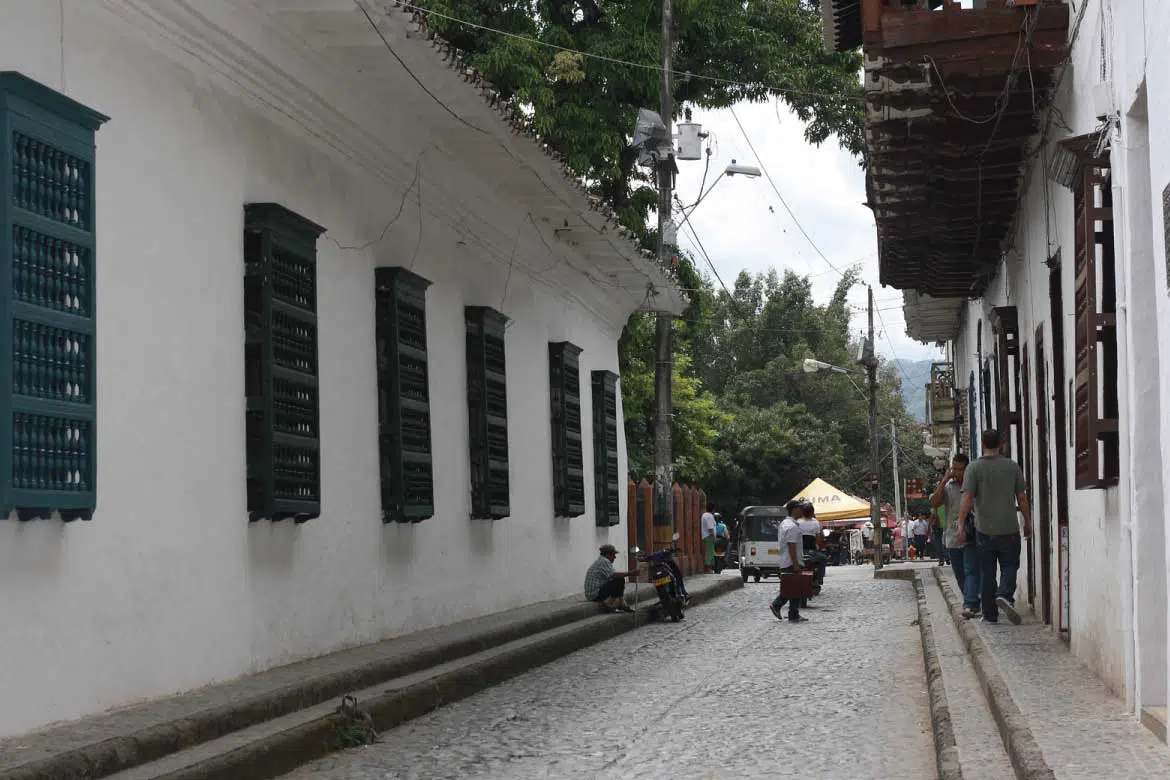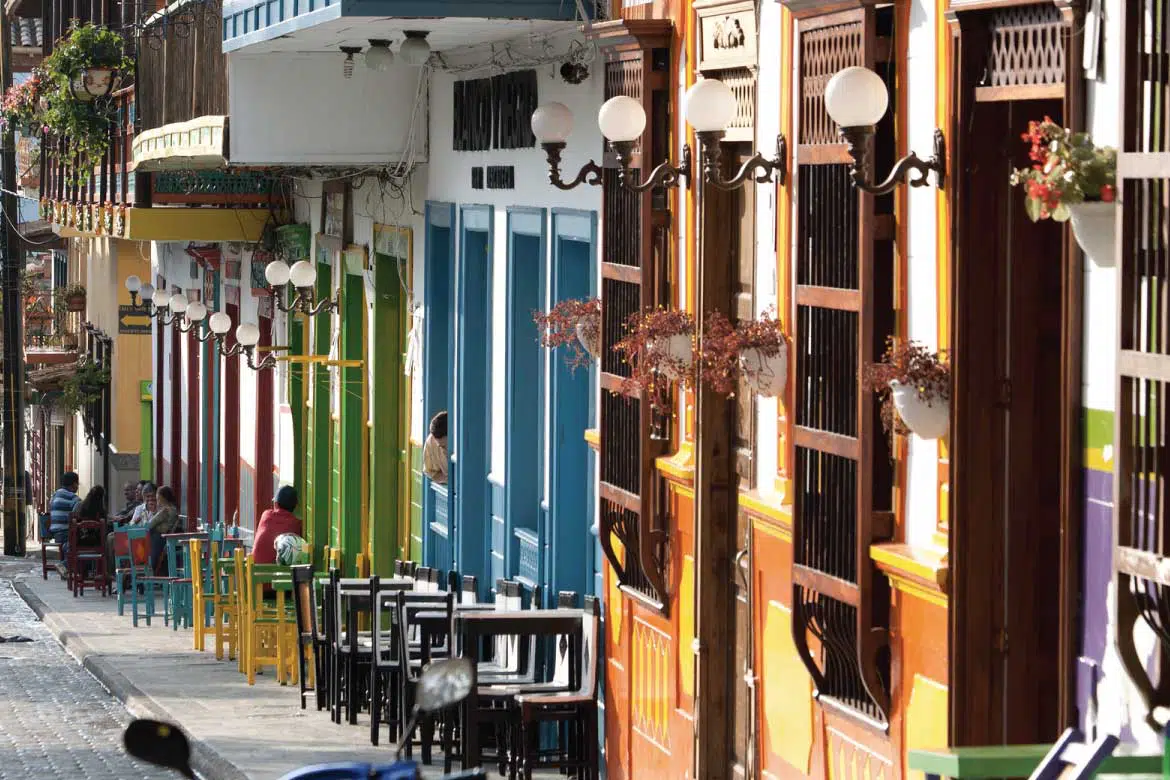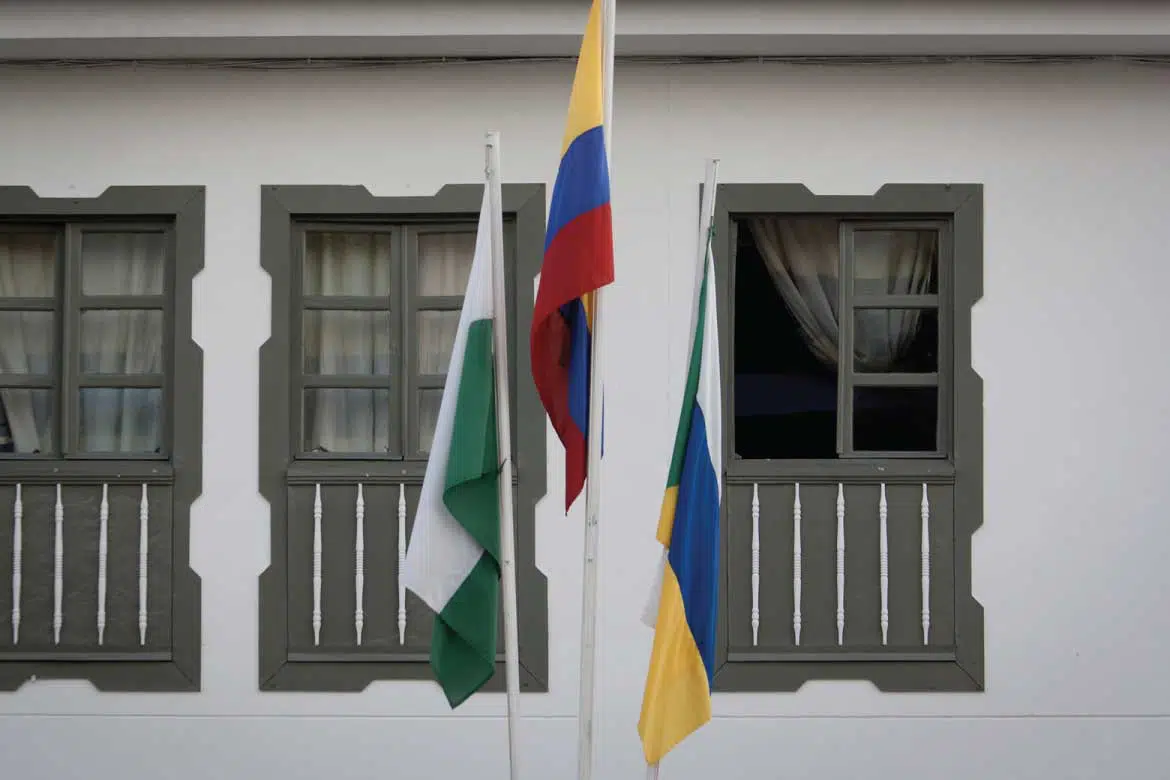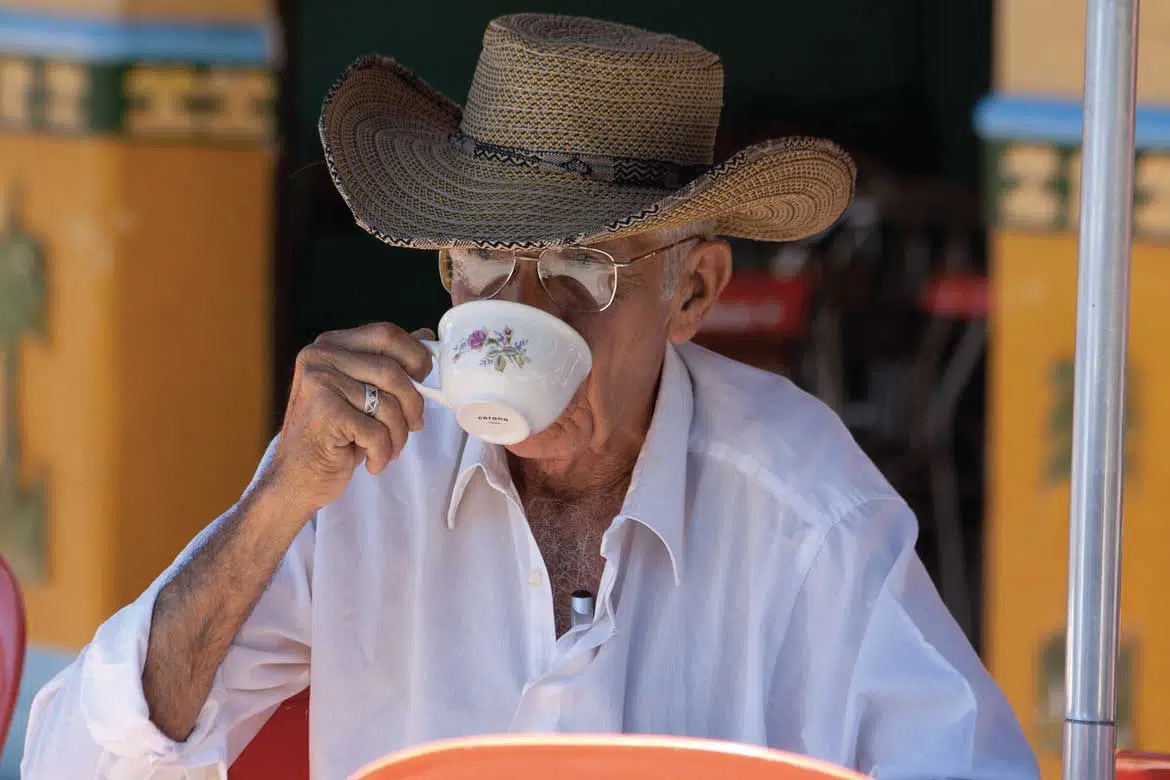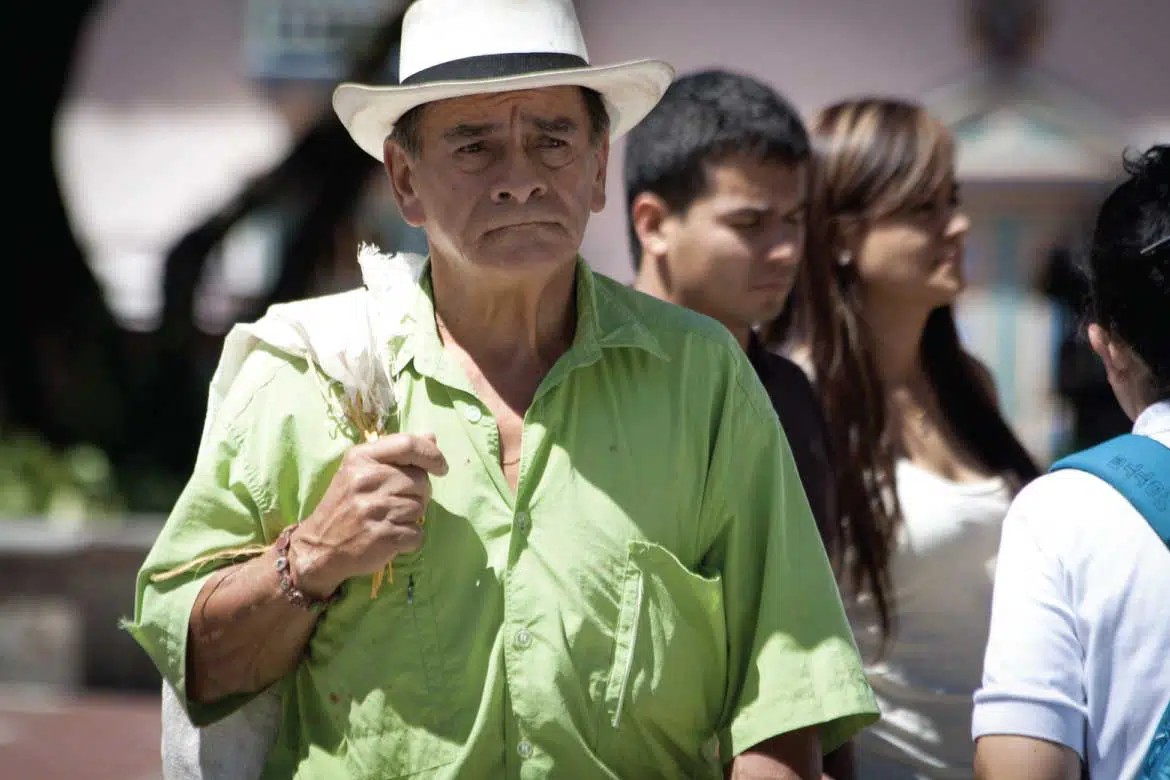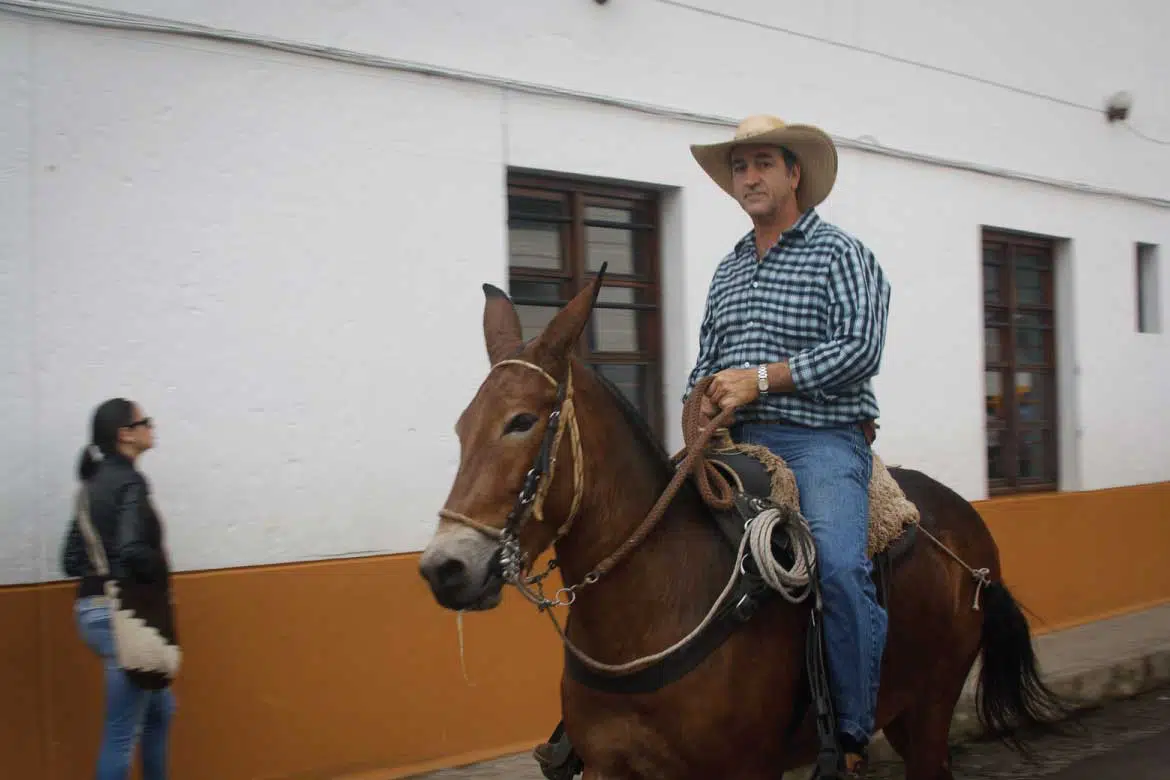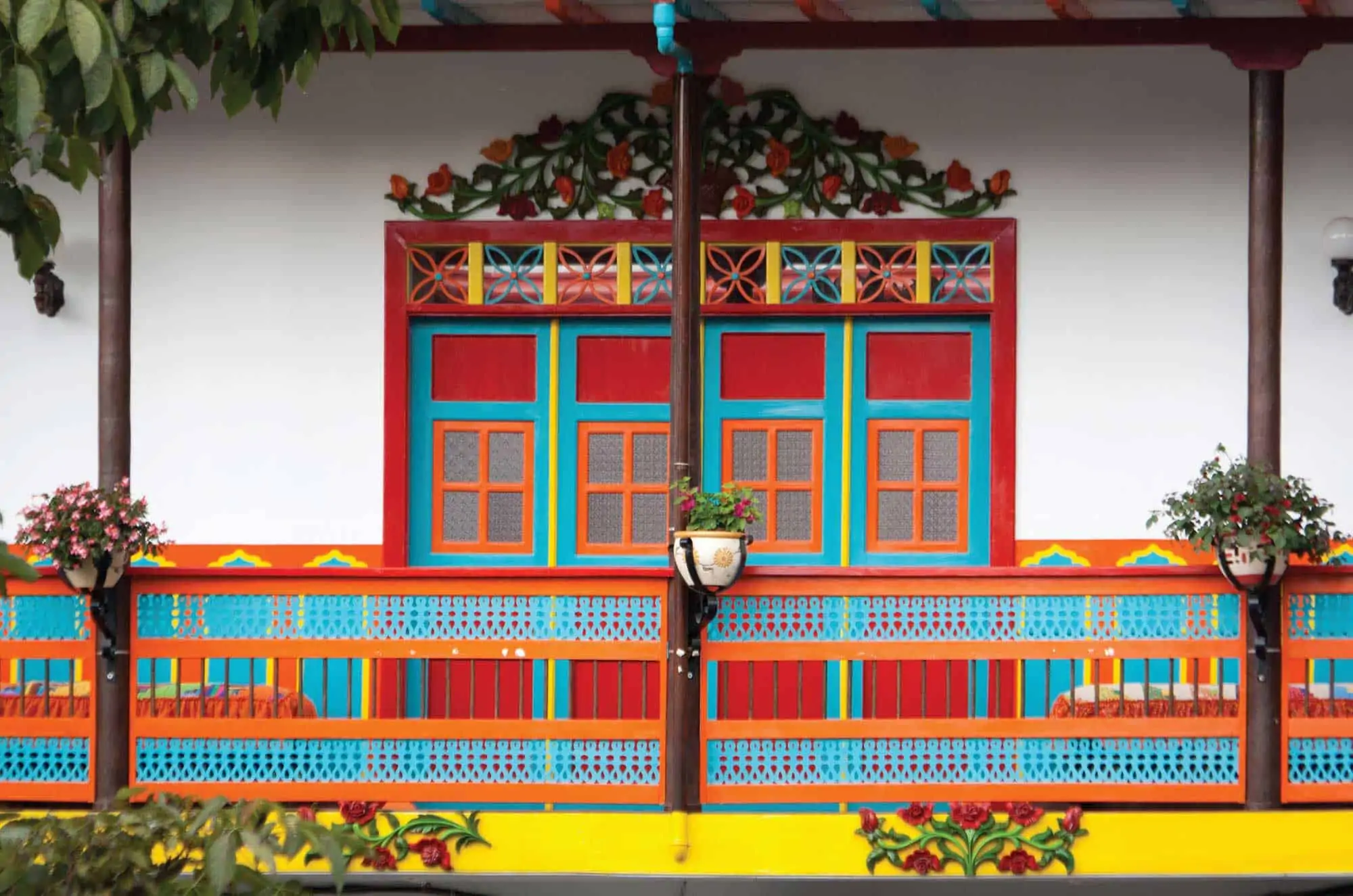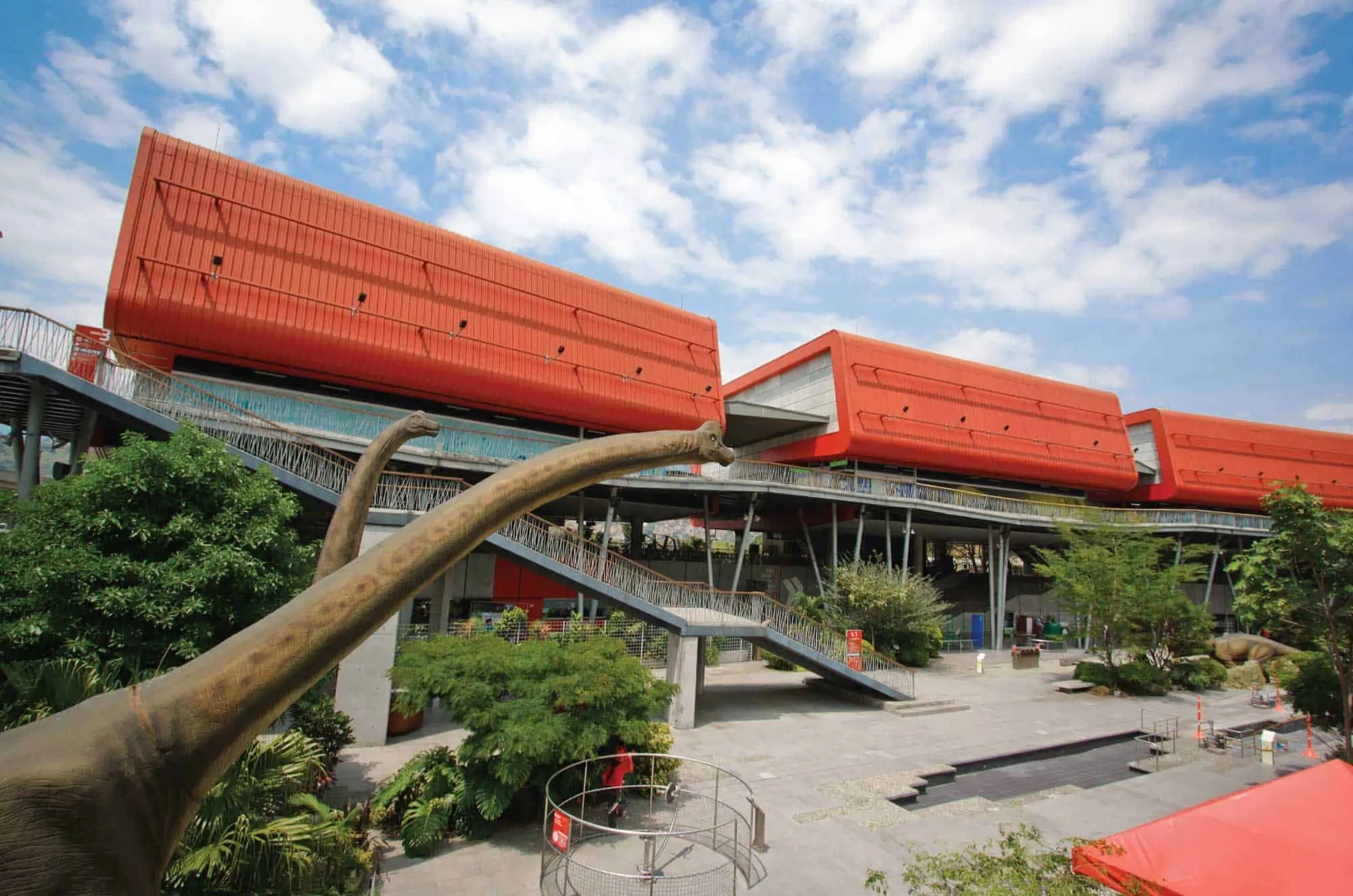Who are the Paisas?
By The Colombian Way
The term Paisa is a geographic, sociological and anthropological denomination. But who are they?
Where do Paisas come from?
Paisas often consider themselves different to other Colombians and according to genetic studies, they are actually an isolated population distinct from the rest of the country. They can be traced back primarily to the autonomous Spanish community of Extremadura that borders Portugal. To a lesser extent they can also be traced back to the Basque region and this is reflected today by the proliferation of Paisa surnames that are of Basque origin. Aristizábal, Gaviria, Montoya and Uribe to name just a few.
Today Paisas are most commonly associated with the department of Antioquia, but more broadly the old administrative Antioquia that also included the modern departments of Caldas, Risaralda and Quindío, the departments that today constitute the Colombian coffee growing region. More broadly still, parts of neighbouring departments also identify as being Paisa, namely the west of Tolima that borders Caldas and Risaralda, and the north of Valle del Cauca that borders Quindío.
Paisa etymology
The word Paisa is a truncated form of the Spanish word paisano, meaning countryman. Today the term Paisa relates more to a cultural identity than a strict geographic origin.
Paisa culture
The Paisa region of Colombia is really too large to insist that the entire Paisa population shares consistent culture traits. It’s fair to say that Paisas are generally proud of their Paisa roots. The common characteristics of Paisas have evolved to encompass the innovation and industriousness of the people of Medellín through to the laid-back coffee-culture charm of Paisas in more rural settings. Paisas have a nostalgic fondness for their own history and lifestyle and this is most evident in Medellín’s Pueblito Paisa, a model Paisa town built on Cerro Nutibara in the city centre.
Traditional Paisa architecture
Paisa towns differ and each has its own architectural features. Guatapé has brightly coloured buildings with stucco panels and friezes. Salento, Marsella and Filandia are all noted for their innovative U-shaped seismoresistant construction. Santa Rosa de Cabal and Calarcá have both expanded in a somewhat unchecked manner but their main squares in the town centre retain a traditional style. Jardín is an unabashed celebration of contrasting colours.
Santa fé de Antioquia possibly best represents traditional Paisa styles, buildings of a timber and mud construction, rustic terracotta pantiles, whitewashed walls, cantilevered wooden balconies, inward looking rooms, wooden window frames with carved wooden scrolls and turned bars, and large wooden doors leading to the inner spaces of important buildings.
Paisa eats and drinks
- Let’s not generalise and suggest that all Paisas eat bandeja paisa 3 times a day, they don’t. But Colombia’s de-facto national dish is from the Paisa region as its name implies.
- Arepas antioqueñas are plain corn patties that can accompany anything, but restaurants in the Paisa region offer a wide variety of arepas, including a unique style of stuffed arepa that can be filled with eggs, meat, or cheese.
- Sancocho antioqueño – Antioquia has its own hearty Colombian soup made with beef, pork, plantains, potatoes, cassava and cilantro. Typically this soup will be made even more filling with the addition of a portion of steamed rice and half an avocado.
- Beans, in Paisa country stewed beans are very common and will be served with an almuerzo corriente.
- Cerveza Pilsen is the beer brand of Paisa origin owned by the AB InBev global brewing giant. Tres Cordilleras is a Medellín-based brewery that distributes its excellent brews throughout Colombia. Medellín also boasts a number of smaller scale craft breweries with tap houses such as Cervecería Maestre, Cervecería Libre and 20 Mission.
- Aguardiente is drunk throughout Colombia but Fábrica de Licores de Antioquia makes the Aguardiente antioqueño brand in the city of Medellín.
- Industría Licorera de Caldas makes the Cristal and Amarillo brands of aguardiente in Manizales, they also produce a rum called Ron Viejo de Caldas which is available nationally.
- Between them Antioquia, Caldas, Risaralda and Quindío produce about 30% of Colombia’s total coffee output, so you can add tinto to the list of Paisa beverages.
Paisa fashion
Medellín hosts Colombiamoda, Colombia’s largest fashion event, so you can presume, at least in large cities that Paisas are fashion forwards, at the cutting edge of Colombian style.
It is very uncommon in the 21st Century to see Paisas wearing traditional clothing that would have been worn historically on the coffee growing hillsides of Antioquia. In rural towns though, well there is a look. If you want to blend in to your surroundings you are going to need a cotton shirt and a hat. It’s also not uncommon to see both men and women wearing ruanas.
Paisa dialect
Paisas have a particular way of speaking Spanish that some refer to as Español Antioqueño. Notwithstanding, it would be wrong to presume that all Paisas have the same dialect. Bear in mind that Colombia is a country of mountains and valleys, so vernacular Spanish has evolved on this basis. Something that someone says in rural Antioquia might not be understood in Quindío.
If you want to learn the meaning of slang words like guayabo and parcero then here is a list of Paisa vocabulary.
Presidential Paisas
The Paisa region is renowned for its political prowess and has sent 6 presidents to Bogotá’s Casa Nariño. They are-
- Carlos Eugenio Restrepo Restrepo, born in Medellín, Colombian president from 1910-1914.
- Marco Fidel Suaréz, born in Bello, Antioquia, Colombian president from 1918-1921.
- Luis Mariano Ospina Pérez, born in Medellín, Colombian president from 1946-1950.
- Belisario Betancur Cuartas, born in Amagá, Antioquia, Colombian president from 1982-1986.
- César Augusto Gaviria Trujillo, born in Pereira, Risaralda, Colombian president from 1990-1994.
- Álvaro Uribe Vélez, born in Medellín, Colombian president from 2002-2010.
Paisas and their business acumen
Don’t be tricked into thinking that being a Paisa is all about folklore and bandeja paisa. Paisas are some of the most astute business people in Colombia. Paisas dominate sectors such as food production, energy, financial services, retail, and even automotive production. Successful Paisa companies include-
- Empresas Públicas de Medellín – The largest company in Medellín is EPM, a utility company, not only serving Medellín but also towns and cities in Caldas and Risaralda. They also have a stake in EPM UNE, a nationwide telecommunications company. They are no ordinary utility company, they also were instrumental in the protection of natural sites such as Parque Arví and Reserva Río Blanco, one of the world’s best birdwatching destinations.
- Grupo Argos – Not a name you will normally hear of, Grupo Argos is a huge Medellín-based conglomerate that focuses on cement and energy. You are most likely to see the Argos brand on the side of a cement truck. Argos also owns Celsia, an energy company that owns hydro, thermal, and wind power generation plants in Colombia.
- Almacenes Éxito – Paisas dominate Colombia’s supermarket landscape, Almacenes Éxito owns Colombian national supermarket chains Éxito and Carulla.
- Grupo Nutresa – Producers of the majority of Colombia’s chocolate bars, other candy items, ham and other cured meats, cookies and crackers, instant coffee, and dried pasta.
- Grupo Sura – A well known Colombian brand in the Insurance, asset management and investment sectors.
- Gaseosas Postobón – Want to buy a bottle of pop? Then there’s a good chance it is from Medellín. Postobón manufactures Colombian favourites such as the bright pink Postobón Manzana, and La Colombiana. They are also the bottling partner for all Pepsi brands.
- Bancolombia – The ubiquitous Colombian bank that can been found not only in larger cities but even in the main squares of the tiniest pueblos. Founded in, and still has its headquarters in Medellín.
- Colanta – One of Colombia’s principal dairy companies.
- Productos Familia – Another ubiquitous brand. Manufacturers of personal care and feminine hygiene products.
- Renault Colombia – Renault has a lengthy history in Colombia. They are headquartered and produce Renault vehicles at their Sociedad de Fabricación de Automotores plant in Envigado, Antioquia.
Famous and infamous Paisas
- Juanes – Grammy Award winning Colombian singer-songwriter. Juanes was born in Carolina del Príncipe in rural Antioquia.
- Fernando Botero – Artist and sculptor whose works can be found in Plaza Botero, Medellín and Museo Botero, Bogotá.
- Andrés Escobar – Former defender for Medellín-based football club Atlético Nacional. Escobar was tragically murdered after the 1994 FIFA World Cup, reportedly for scoring an own goal.
- José María Córdova – Born in Concepción, Antioquia, Córdova was a Colombian military general instrumental in the liberation of Colombia, Perú and Bolivia. Medellín’s Rionegro international airport is named after him.
- Mariana Pajón – Affectionately known as Tata or Queen of BMX, Pajón is a two-time Olympic gold medal winner in the women’s BMX.
- Pablo Escobar – Drug baron, politician, and hippopotamus breeder.
- Juan Valdéz – A fictional mule-owning Paisa stereotype that promotes Colombian coffee.
Where to experience Paisa culture?
- If you want a short sharp assault of nostalgic but historically accurate Paisa culture then head to Recuca for their unique and idiosyncratic coffee tour.
- For a more relaxing Paisa coffee experience, we would recommend a few nights in the idyllic surroundings of Hacienda Venecia just outside of Manizales.
- To experience Paisa towns and drink a coffee alongside the locals in a colourful town square then we recommend Jardín, Santa Fé de Antioquia, Guatapé, or Salento.
- Of course, the Paisas don’t dwell on the past, so be sure to visit modern examples of Paisa inventiveness and innovation in the city of Medellín, such as Parque Explora or the MetroCable.


